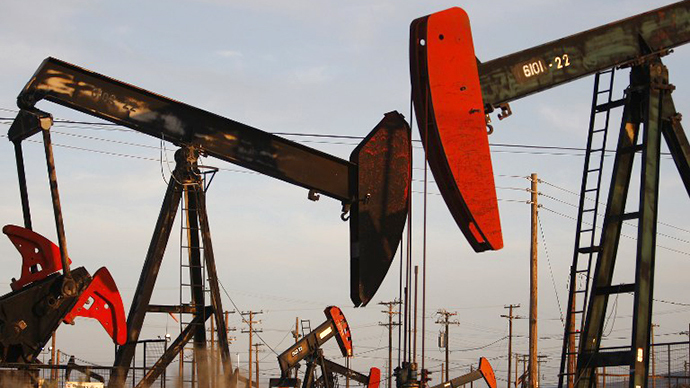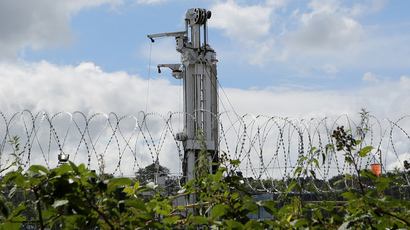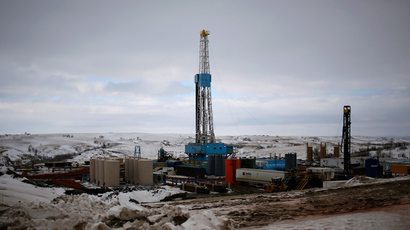Flaming water wells? High methane levels in Texas water linked to fracking

Testing of methane concentration in water of Parker County, Texas indicates a link between the dangerously high levels of natural gas in local water supply and hydraulic fracturing, or fracking, operations in the gas-rich Barnett Shale, scientists say.
Parker County resident Steve Lipsky has known for years his water has been contaminated with high levels of methane gas. Last year, he filed a complaint with state oil and gas regulators at the Texas Railroad Commission. More recently, news broadcaster WFAA even went so far as to “ignite” local well water to highlight the issue.
After measuring gas content in his water well, state regulators said that while methane concentration in Lipsky’s water was up, the chemical makeup of the methane was inconclusive. Thus, the source of the gas remains a mystery, according to the state.
The Railroad Commission’s tests found Lipsky’s water contained 8.6 milligrams per liter of methane, not quite the federal limit of 10. Yet separate tests by a researcher at the University of Texas-Arlington found 83 milligrams per liter in the water, an incredibly high count.
“What we can say right now is that those are dangerous -- that's a dangerous level," Zac Hildebrand told WFAA.
In response, the Railroad Commission told WFAA “the Commission is aware of elevated methane concentration levels." An agency spokeswoman said the "sampling and test results were focused on the source of the methane gas" and not on measuring methane levels.
"For whatever reason, they do not want to have on their record the true levels that I have," Lipsky said.
The agency measured the chemical content of gas in Lipsky’s water and that of two nearby gas development wells, known as the Butler and the Teal. The state found that “the evidence is insufficient” to connect the two samples.
Yet the test data indicates that the “chemical signature,” or isotopic analysis, of the Barnett Shale gas is 46.52, while Lipsky’s water is 46.63, obviously a close match.
"The methane and ethane numbers from the Butler and Teal production are essentially exactly the same as from Lipsky's water well,” earth scientist Geoffrey Thyne told WFAA after reviewing the results. “It tells me that the gas is the same, and that the gas in Lipsky's water well was derived from the Barnett formation."
Soil scientist Bruce Payne also reviewed the testing data, and he agreed that Lipsky’s water was tainted by fracking in the area.
"The gas from [Lipsky’s well] is coming from the Barnett and it's coming nearly straight from the Barnett," Payne said.
The scientists said this evidence could mark the first solid link between fracking and aquifer contamination in the United States, which is seeing a boom of fracking operations from California to Pennsylvania.
"And what we seem to have here is the first good example that that in fact is happening,” Thyne said.
The fracking process entails blasting fissures in rocks thousands of meters under the earth with water and sand to release trapped deposits of oil and gas. Injection wells used to dispose of highly-toxic fracking wastewater have contributed to heightened earthquake activity across the nation. The wastewater - riddled with hazardous and often undisclosed chemicals and contaminants - has been linked to a hostofhuman and environmentalhealthconcerns.
In addressing discrepancies between their report and the scientists’ reviews, the Railroad Commission said its “staff stands behind the conclusions reached in the May 23rd report. We are aware of other ongoing studies in the area, and we welcome the opportunity to review any future reports."
But Lipsky said he realizes he can no longer lean on the state for protection.
"Unless people get off the couch and vote or do something, who's going to stop them from continuing doing what they are doing?" Lipsky said.














